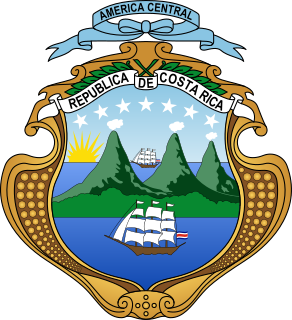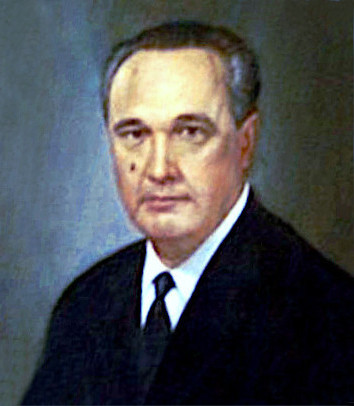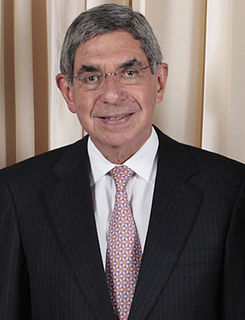| |||||||||||||||||||||||||
| Turnout | 112,559 | ||||||||||||||||||||||||
| |||||||||||||||||||||||||
| |||||||||||||||||||||||||
 |
|---|
| This article is part of a series on the politics and government of Costa Rica |
Legislature |
|
General elections were held in Costa Rica on 11 February 1940. [1] Rafael Ángel Calderón Guardia of the Independent National Republican Party won the presidential election. Voter turnout was 80.8% in the presidential election and 65.6% in the parliamentary election. [2]

Costa Rica, officially the Republic of Costa Rica, is a country in Central America, bordered by Nicaragua to the north, the Caribbean Sea to the northeast, Panama to the southeast, the Pacific Ocean to the southwest, and Ecuador to the south of Cocos Island. It has a population of around 5 million in a land area of 51,060 square kilometers. An estimated 333,980 people live in the capital and largest city, San José with around 2 million people in the surrounding metropolitan area.

Rafael Ángel Calderón Guardia was a Costa Rican doctor and politician, who served as President from 1940 to 1944.
Contents
Since 1938, two tendencies had begun to emerge in the ranks of the Republican Party, one revolving around the popular ex president Ricardo Jiménez Oreamuno and another around the young doctor and charismatic politician Rafael Angel Calderón Guardia. [3] Jiménez, however, an old man, would gradually leave power and influence, and the "Jimenismo" lost ground to Calderonism, which also has full support from the government chaired by León Cortés Castro who pressures Jiménez into retirement. [3]

Romualdo Ricardo Jiménez Oreamuno served as president of Costa Rica on three separate occasions: 1910 to 1914, 1924 to 1928, and 1932 to 1936.

León Cortés Castro was a Costa Rican politician. He served as President of Costa Rica from 1936 to 1940. During his term he introduced new bank reforms, supported banana plantations in the South Pacific region, and established ports at Quepos and Golfito. His administration is often referred to as the "iron bars and cement administration" because of the various construction projects undertaken during his presidency, including the construction of the former International Airport of La Sabana. He was the last of a series of relatively conservative Presidents. He considered changes to allow him to pursue re-election as President, but ultimately backed down due to a Constitutional ban on consecutive terms. He was succeeded by Rafael Ángel Calderón Guardia, who ultimately broke with tradition and substantially increased the scope of the social state.
To prevent a triumph of the Calderonismo a coalition was tried between the Communist Party, a faction of the jimenismo and the Social Democratic Guanacastecan Brotherhood called National Democratic Alliance, nevertheless when Jiménez declines to be candidate this is broken so the parties that integrate it ran separately. During the National Republican Convention Calderón is selected presidential nominee and wins the elections. [3]














